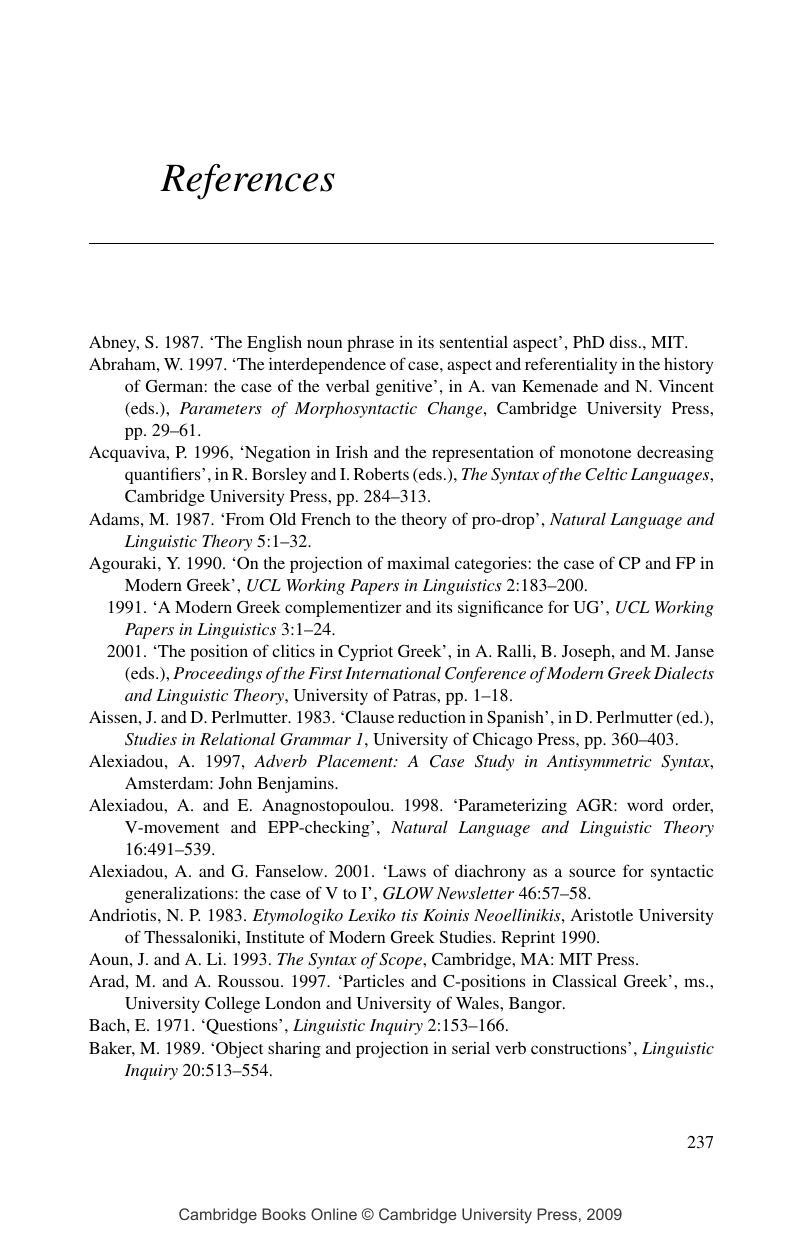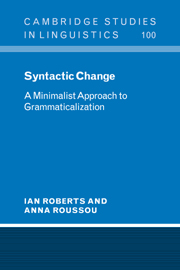References
Published online by Cambridge University Press: 22 September 2009
Summary

- Type
- Chapter
- Information
- Syntactic ChangeA Minimalist Approach to Grammaticalization, pp. 237 - 256Publisher: Cambridge University PressPrint publication year: 2003



